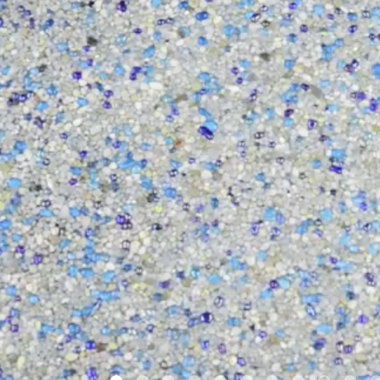A Look at Different Pool Finishes
One of the questions you’ll need to answer at the time of pool remodeling is ‘what kind of pool finish do I want?’. The interior finish of a swimming pool greatly affects its overall look, so it is an important consideration when you’re laying the groundwork for a design update. Here’s a look at three pool finishes – plaster, tile and aggregate.
Plaster
Plaster, the least expensive option, is made of a mixture of Portland cement, marble dust/silica sand, and is the most common pool surface finish. White plaster offer a smooth, elegant appearance, and continues to be a classic choice in modern homes. It also happens to be the most cost-effective option, lasting anywhere from five to seven years on average before starting to chip or etch. You can figure seven to ten year total life before needing replacement.
Dyes and colored pigments are added to plaster to achieve the desired effect. A popular choice in this regard is a grayish hue that brings out the blue color of the pool water. Darker colors make the pool appear like a natural pond where the water reflects the surrounding landscape.
Tip: Consider a white interior finish if your pool has interior lighting that changes color, white will display the various colors more distinctly.
Tile
Tile is a versatile and durable option, usually used for a pool’s floor, waterline and steps. Tiles can also be applied to the full pool interior. Their glossy surface sits well with the pool’s natural reflective properties and add a touch of glamour.
You can choose from stone, glass, porcelain and ceramic tiles. Pool tiles are available in a range of colors, sizes, shapes and styles, so the possibilities are countless. However, tile is quite an expensive proposition, and the installation process isn’t exactly quick. But it also offers the best longevity, offering several years of service and beauty with periodic maintenance.
- Porcelain and ceramic tiles are most sought-after in residential and commercial pools. Bold colored tiles made from these materials look visually-striking, especially during daytime.
- Glass tiles lend a sophisticated look and are valued for maintaining their sheen. That’s because they are non-porous, and therefore, neither stain nor erode. As they magnify and reflect light, glass tiles also add a shimmering quality to the pool.
- Stone tiles are also a popular option in pool finish, and more so at homes built in a contemporary style. Marble, granite, limestone and slate complement natural pool designs and make the pool blend seamlessly with the surrounding landscape.
Aggregate
Aggregate finishes for pools comprise of white or colored plaster and pieces of granite, glass beads, quartz or river stones. They are an excellent option for custom-designed pools, offering endless choices in colors and textures. Aggregate finishes also lend an upscale look to the poolscape.
- Polished aggregate finish consists of colored stones crushed into a fine powder and then applied with a trowel. It is then polished to create a smooth surface and make the stone appear more lustrous. The colored granite or quartz flecks add visual interest and enhance the plaster’s life by 15 to 20 years.
- The alternative is exposed aggregates containing glass beads or river pebbles. After application, the finish is washed to remove the top layer of the concrete and reveal the glass beads/colored pebbles. Consider a pebble finish if you’re aiming for a rustic or tropical look. Glass bead finishes make the pool surface sparkle, and go hand-in-hand with modern pool designs.
- Second only to tile, aggregate finishes provides a long pool surface life and over the course of ownership costs far less than plaster.
Understand which pool finish will suit your poolscape and compare it against the existing facade of your home to determine if it will look aesthetic and harmonious.

